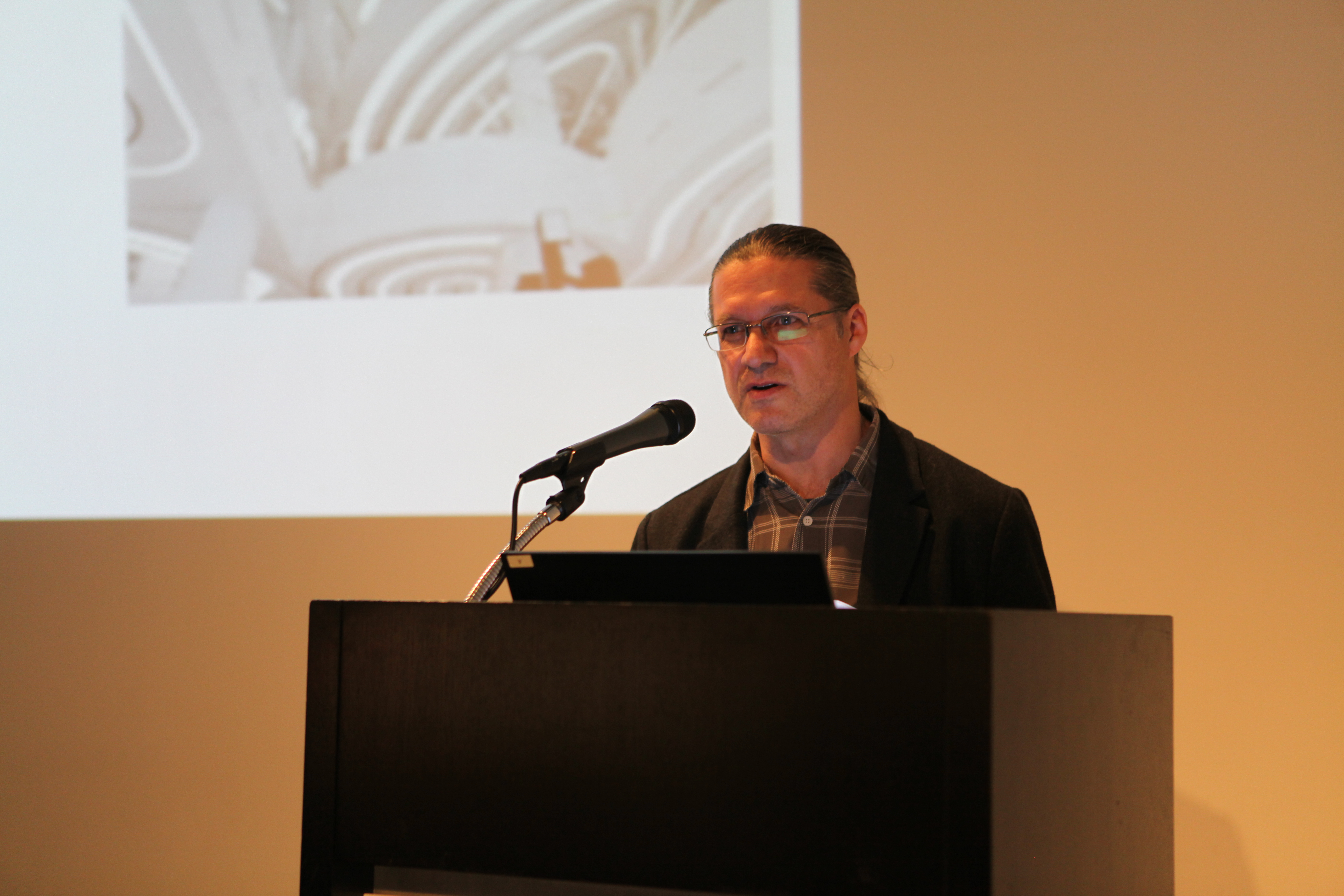by: Fe Rodriguez Marquez
There were essentially two threads UNStudio Principal Ben van Berkel weaved through his presentation for the Arthur M. Rosenblatt Memorial Lecture. The first was a refocusing of the design process, specifically the collaboration between the architect and specialty consultants. The second was a search for the creation of built environments that are rich enough to lend themselves to multiple readings.
In light of the ever-expanding list of requirements that buildings must meet, van Berkel has begun to shift his design process from a linear – a sort of fragmented organization – to what he calls a “knowledge platform.” This recalibrated collaboration offers a fluid exchange of information and yields more intelligent buildings by mining innovative solutions to increasingly demanding regulations. One project that particularly benefited from this knowledge platform was the Mercedes-Benz Museum in Stuttgart. Here, the team collaborated with a manufacturer to develop a unique smoke extractor capable of drawing in smoke from a 130-foot-tall atrium, allowing for open floor plans at the perimeter and saving 30% in the concrete core. Generally, van Berkel said, design interaction of this nature offers quantitative results: 15% less materials and 10% cost reduction. As one slide stated, “Collaboration is not new. What has changed is the scale and tools of collaboration.”
The second thread of his lecture – and one more central to the cultural nature of the Rosenblatt Lecture series – was his inspiration from fields outside of architecture, such as the arts and mathematical models. Just as Warhol offered multiple Marilyn Monroe portraits instead of a single, fixed interpretation, so has van Berkel attempted to offer a series of readings for the Erasmus Bridge in Rotterdam. Depending on the light, the bridge may fade almost entirely into the sky, while at other times it becomes a visually striking sculpture connecting two parts of the city fabric. Similarly, UNStudio’s temporary Burnham Pavilion in Chicago’s Millennium Park may have functioned as a kind of funhouse for the eyes, framing different views of the skyline, while at other times served as a backdrop for a salsa class. Egon Schiele’s “Self Portrait with Hands on Chest” illustrates how the articulation of the knuckles and expression of the hands may offer more insight than a broad gesture would provide. The sinuous curves of the Möbius strip may offer a point of departure for a circulation pattern where inhabitants sleep, bathe, eat, and work at different times within the same house. Finally, a version of a trefoil knot may offer endless display and circulation possibilities when repeated and expanded vertically, as in the Mercedes-Benz Museum. Whatever the reference, van Berkel seeks to create everyday cultural experiences where an infinite number of interpretations are available to the inhabitants of his built environments. As stated, good architecture should be like a good book or movie, one that is visited again and again and is different every time.
Fé Rodríguez Márquez, Assoc. AIA, is a Project Manager in the Cultural Institutions Program Unit at the NYC Department of Design & Construction.
Event: 7th Annual Arthur M. Rosenblatt Memorial Lecture: Every Day Culture
Location: Center for Architecture, 10.23.2013
Speaker: Ben van Berkel, Co-Founder / Principal Architect, UNStudio
Organizer: AIANY Cultural Facilities Committee












